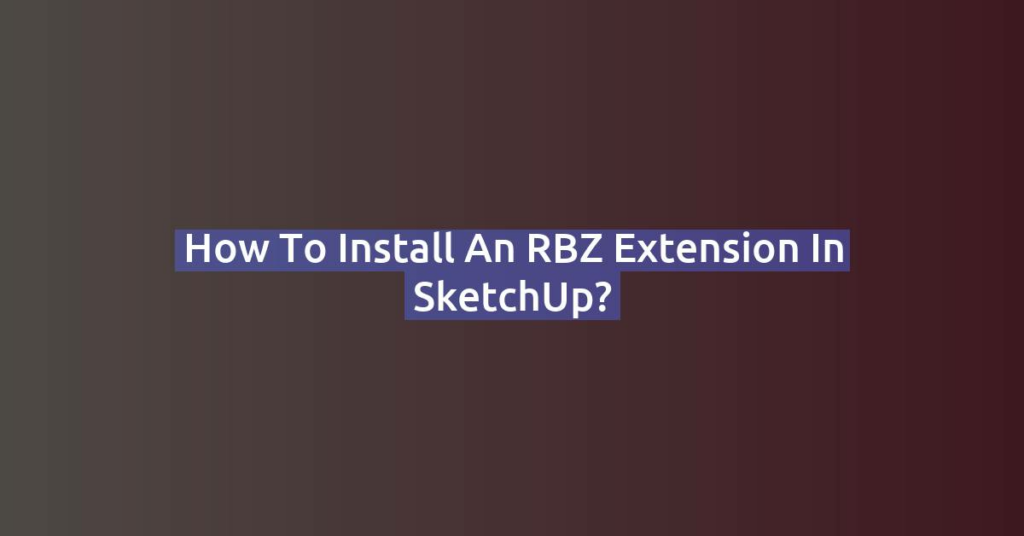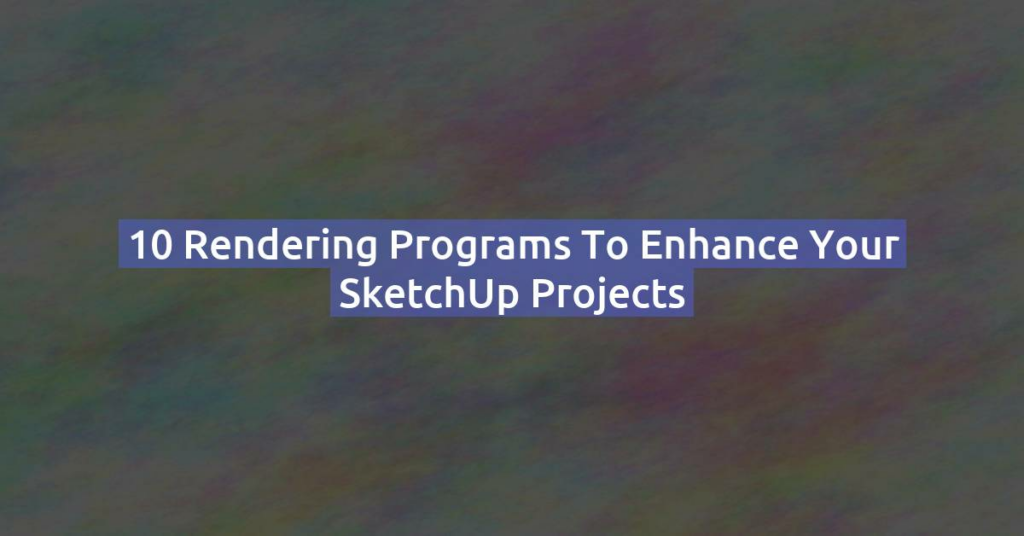One of the best ways to personalize your SketchUp models is by creating custom materials and textures. While SketchUp offers a wide variety of pre-made textures, sometimes you need something unique to bring your vision to life. Whether you’re aiming for a specific look or trying to match real-world materials, creating custom textures can take your models to the next level. In this post, we’ll guide you through the process of creating and applying custom materials in SketchUp, discuss useful software and plugins, and provide tips for making realistic textures.
1. Understanding Materials and Textures in SketchUp
Before diving into custom textures, it’s important to understand the basics of materials and textures in SketchUp:
- Materials: In SketchUp, materials are what you apply to the surfaces of your 3D model. They can be simple colors, images, or complex patterns.
- Textures: Textures are images that you apply to a material to give it a specific appearance, such as wood grain, brick, or fabric. The texture wraps around the surface of your model, creating a realistic effect.
2. Creating Custom Textures from Scratch
Creating custom textures involves creating or selecting an image that will be used as the texture, then applying it to your SketchUp model. Here’s a step-by-step guide:
Step 1: Choose or Create a Texture Image
- Creating Your Own: If you want to create a texture from scratch, graphic design software like Photoshop, GIMP (free and open-source), or Affinity Designer can be used. You can create patterns, seamless textures, or edit photographs to match the look you need.
- Finding Images: Alternatively, you can use high-resolution images from texture websites like Textures.com, CC0 Textures, or Pixabay. Ensure the images are tileable or seamless to avoid visible repetition when applied to large surfaces.
Step 2: Prepare the Image for Use in SketchUp
- Image Dimensions: Make sure your image has appropriate dimensions for use as a texture. A typical size is 1024×1024 pixels for a high-quality texture. For seamless patterns, the width and height should be equal.
- Seamless Tiling: If your texture needs to cover large areas, ensure it’s seamless. This means that when the image repeats, the edges should match up perfectly without any visible seams. In Photoshop, you can use the Offset filter to check the edges and make adjustments.
Step 3: Import the Texture into SketchUp
- Open SketchUp: Start by opening your SketchUp project.
- Create a New Material: Go to Window > Materials to open the Materials dialog. Click the Create Material button (a small plus sign).
- Name Your Material: Give your material a descriptive name.
- Import the Texture Image: Under Texture, click Browse and select your image file. This will apply the image to your new material.
- Adjust the Scale: Once the texture is applied, you may need to adjust the scale. Use the Size fields to enter the real-world dimensions of the texture. For example, if your texture image is a 2×2 meter concrete tile, enter 2 meters for both width and height.
3. Applying Custom Materials to Your Model
Now that your custom material is ready, it’s time to apply it to your model:
- Select the Paint Bucket Tool: Use the Paint Bucket tool from the toolbar or press B on your keyboard.
- Choose Your Custom Material: In the Materials dialog, select your custom material from the list.
- Apply to Surfaces: Click on the surfaces in your model where you want to apply the material. For best results, apply the material to flat surfaces first, then adjust for more complex shapes.
4. Using Plugins and Software for Advanced Texture Creation
If you’re looking to create more complex or highly realistic textures, consider using specialized software and plugins:
- Substance by Adobe: Substance is a powerful tool for creating procedural materials and textures. It allows for the creation of highly detailed and customizable materials that can be exported directly into SketchUp.
- SketchUV Plugin: SketchUV is a popular SketchUp plugin for UV mapping, allowing you to control how textures are applied to complex surfaces. It’s particularly useful for curved surfaces or irregular shapes where standard texture mapping might not work well.
- Photoshop or GIMP: Use these programs to edit and enhance your texture images. You can create bump maps, specular maps, and normal maps, which add depth and realism to your textures when used in conjunction with rendering engines like V-Ray.
5. Tips for Making Realistic Textures
Creating realistic textures involves more than just applying an image to a surface. Here are some tips to enhance the realism of your textures:
- Use High-Resolution Images: Low-resolution textures can appear pixelated or blurry when applied to large surfaces. Always use high-resolution images for better quality.
- Add Bump Maps: Bump maps simulate small surface details like grooves or embossing without adding extra geometry. This is particularly useful for materials like bricks, wood, or tiles.
- Pay Attention to Scale: Ensure that the scale of your texture matches the real-world material. For example, if you’re creating a brick wall, make sure the bricks in your texture are the correct size relative to your model.
- Lighting and Shadows: Realistic textures should interact with light realistically. When using rendering engines, adjust the material’s properties like reflectivity, glossiness, and transparency to match the real-world material.
Conclusion
Creating custom materials and textures in SketchUp allows you to add a personal touch to your models and achieve a level of realism that sets your work apart. By following the steps outlined above, you can create, import, and apply custom textures that perfectly suit your design needs. Whether you’re working on architectural visualizations, interior design, or any other project, mastering custom textures will give you greater control over your final output.
Ready to start creating your own custom materials? Dive in and experiment with different textures, and don’t forget to share your results with the SketchUp community!



